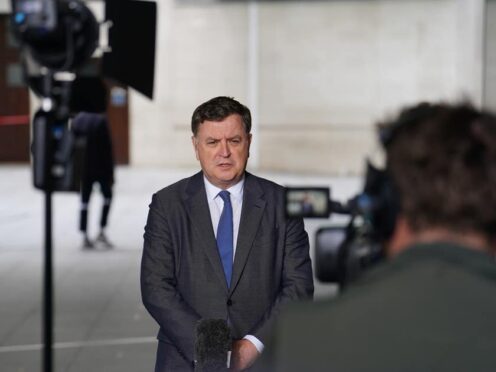This summary of claims from the campaign trail has been compiled by Full Fact, the UK’s largest fact checking organisation working to find, expose and counter the harms of bad information, as part of the PA news agency’s Election Check 24.
Has child poverty fallen since 2010?
On Sky News on Sunday, Work and Pensions Secretary Mel Stride claimed “we have reduced child poverty in this country by 100,000” since 2010.
Mr Stride’s claim is true according to one measure of child poverty — “absolute” low income, after housing costs. The latest data shows the number of children in poverty under this measure fell from 3.7 million in 2009/10 to 3.6 million in 2022/23.
But there are different measures of poverty — and others show a rise in child poverty since 2010.
For example, the equivalent figure for absolute low income before housing costs shows an increase since 2009/10, from 2.5 million to 2.6 million.
The number of children in “relative” low income after housing costs has increased since 2009/10, from 3.9 million to 4.3 million. And it’s also increased before housing costs, from 2.6 million to 3.2 million in 2022/23.
Relative low income measures the number of people in households where the income is below 60% of the median that year. Absolute low income measures the number of people in households where the income is below 60% of the median in 2010/11, adjusted for inflation.
How close are Reform UK and the Conservatives in the polls?
Reform UK leader Nigel Farage claimed on the BBC’s Sunday with Laura Kuenssberg that “right now” his party was “just two to three points behind the Conservatives”.
However this is a selective take on what recent polls show.
Of the polls we’d seen when Mr Farage spoke on 9 June, there had been three where the gap between the two parties was that small. YouGov’s from 3-4 June had the Conservatives on 19% and Reform UK on 17%, while its more recent poll from 5-6 June put Reform UK on 16% and the Conservatives on 19%. And Redfield and Wilton’s from 5-6 June had the Conservatives on 19% and Reform UK on 17%.
However, there have been a number of other polls which show a wider gap.
For instance, Deltapoll from 6-8 June put the Conservatives on 21% and Reform UK on 12%, while Whitestone Insight (7 June) had the parties six percentage points apart and WeThink (6-7 June) five. Meanwhile Opinium from 5-7 June had the Conservatives on 24% and Reform UK on 12%, and Savanta (5-7 June) on 26% and 11% respectively.
Speaking on the programme, Mr Farage said he had concerns over how some pollsters prompted for Reform UK when recording voting intention.
Labour’s tax rise claim
Tax has been a key battleground between Labour and the Conservatives so far in this election, and we saw that again in the BBC seven-party debate last Friday, when Labour’s deputy leader Angela Rayner claimed there have been 26 tax rises under the Conservatives.
This is similar to a claim we’ve seen Labour make before, about there having been 25 tax rises since the last election.
It’s not clear how Labour arrived at this exact figure. A list we’ve seen previously of what appears to be the 25 tax rises includes a range of tax changes that have occurred since 2019, such as an increase in corporation tax and freezes to some tax thresholds, but seems to omit others. The Institute for Fiscal Studies said in January that it’s likely there have been hundreds of specific tax rises (and cuts) since 2019, and what’s more significant is that this was “the biggest tax-raising parliament in modern times”.
